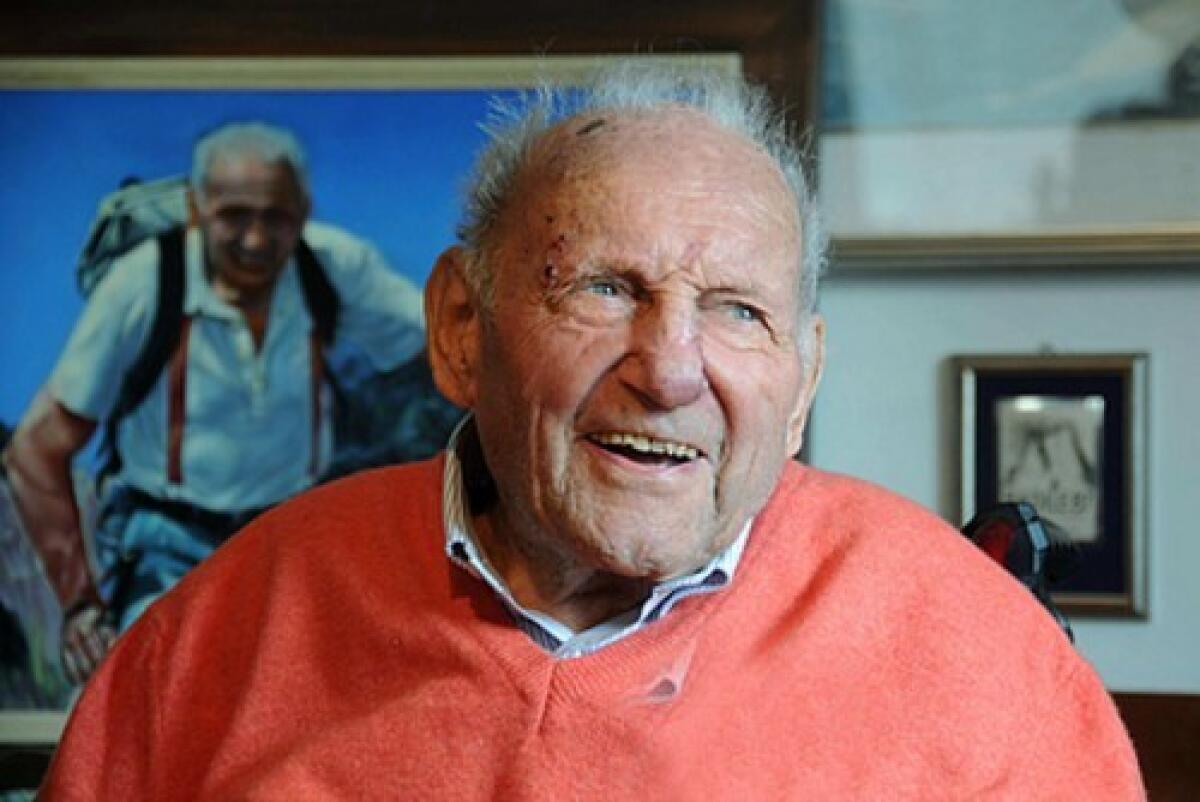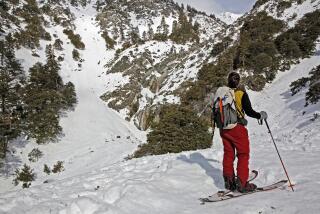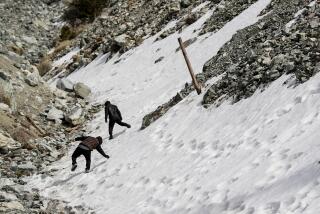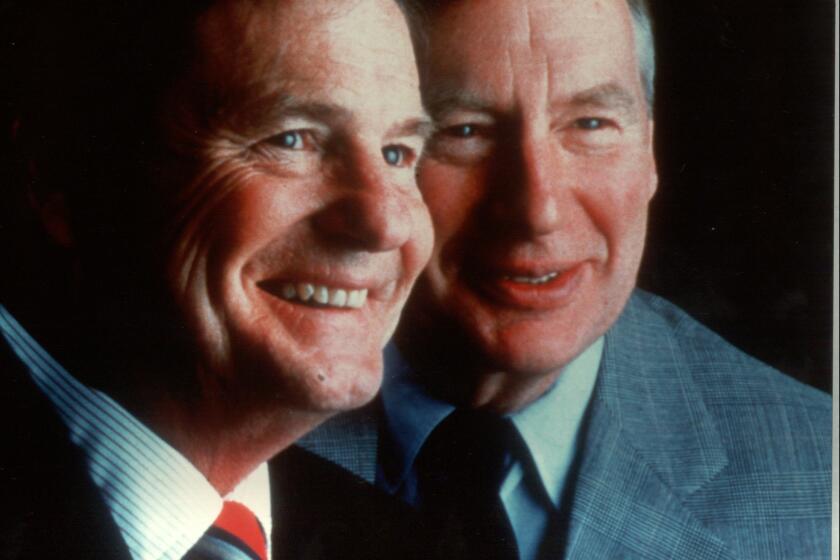Riccardo Cassin dies at 100; legendary Italian mountain climber

Riccardo Cassin, who was a legendary Italian alpinist fondly known as “Il Padre,” has died. He was credited with more than 2,500 climbs and 100 first ascents around the world and discovered routes that 70 years later are still considered benchmarks reserved only for the sport’s elite.
Cassin, who started a premier climbing-equipment company in 1947, died Aug. 6 at his home in Piani Resinelli, a town north of Milan. He was 100.
During a 60-year career, Cassin led hundreds of expeditions, including treks through the Alps, the Himalayas, the Caucasus and the Andes. He ascended some of the world’s most challenging peaks with equipment today’s mountain climbers would consider primitive: tawny hemp ropes and handmade anchors he forged in a blacksmith’s shop from spare parts.
Cassin willingly sought out the world’s most audacious and riskiest routes. In July 1961, he led a team up Mt. McKinley in Alaska -- the highest peak in North America -- over a precarious southern ridge previously deemed impossible to traverse.
More than 300 climbers have died so far on expeditions up Mt. McKinley, which is approximately 20,320 feet high. Temperatures on the face have been recorded as low as 100 below zero. Weather can be so unpredictable that a consecutive 12-hour climbing window is considered a godsend.
Cassin’s trip was no different. He chose a southern route that experts at the time asserted was “unclimbable,” because it had a sheer granite face that ascended 10,000 vertical feet in just 1.6 miles that “no man could scale.” Only five of the 30 days the Italians spent on the mountain were climbable. All six climbers were hospitalized afterward for frostbite.
The team’s success on what is now known as “Cassin Ridge” made international news. President Kennedy sent Cassin a telegram offering “warmest congratulations,” calling the frigid trip a “splendid mountaineering feat.”
Cassin was notable for navigating up mountains by intuition and down them by memory. Fosco Maraini, the Italian ethnographer and travel writer who accompanied Cassin on several expeditions, learned this firsthand.
“There is something indestructible about this man; Paleolithic and Neanderthalish. Climbing with him you sense an inner force utterly alien to our complicated, mechanized, intellectualized world,” Maraini told the authors of “Fifty Classic Climbs of North America.” Cassin had “a supreme and subtle contact with rocks and sky, with ice and wind. Any Zen master would claim him as one of his own.”
Riccardo Cassin was born Jan. 2, 1909, to a peasant family in San Vito al Tagliamento in northeastern Italy. He was 3 when his father died of asphyxiation in a mining accident while in Canada supporting the family.
Cassin left home at age 17 to work the bellows at a blacksmith forge in Lecco, a small Italian valley village nestled near the southeastern neck of Lake Como. His first passion had been boxing, but on the weekends, Cassin accompanied his ragtag group of friends that called themselves the “Ragni Di Lecco,” or spiders of Lecco, on climbing trips to the smaller local 7,000-foot summits.
Cassin soon dropped boxing because climbing slowed his reflexes in the ring. Shortly thereafter, the Ragni began to take on more ambitious climbs, including three of the Alps’ famous North Faces.
In 1937, he embarked on a three-day climb up Piz Badile, which had never been scaled. Cassin and his team ascended safely and also rescued two climbers who had been stranded in the middle of a blizzard for 12 hours. The two groups joined for the perilous descent, but the stranded climbers died of exhaustion on the way down.
A year later, Cassin completed his crowning achievement: the first ascent of the Walker Spur of the Grandes Jorasses on the Mont Blanc massif.
During World War II, Cassin received an exemption from military service because he worked in a factory that produced military equipment. But he joined the partisan movement to fight against the Germans.
In 1947, Cassin started a climbing-gear shop that evolved into an international operation, Cassin Srl, known for top-class equipment.
Survivors include three sons, eight grandchildren and six great-grandchildren.
Shapiro writes for the Washington Post.
More to Read
Start your day right
Sign up for Essential California for the L.A. Times biggest news, features and recommendations in your inbox six days a week.
You may occasionally receive promotional content from the Los Angeles Times.






